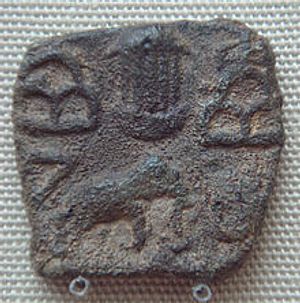Sri Lanka has always been an indisputable part of South Asia, geographically and culturally. Yet, it is also a place apart in many ways. Unlike other modern countries in South Asia, like India, Bangladesh, and Pakistan, which have experienced political unity under many empires, Sri Lanka has always been a distinct region unto itself within South Asia. The great empires of the subcontinent, with one notable exception, made little effort to control Sri Lanka, and even the British ruled it separately from the Raj, as a crown colony. It is especially interesting that Buddhism survived in Sri Lanka, despite the island’s only neighbors being Hindu-majority regions and the fact that most of the islands in the Indian ocean (Zanzibar, Comoros, the Maldives, Indonesia) converted to Islam during the last millennium. Despite having been a hub of trade, many cultural currents seemed to have passed Sri Lanka by.
Nonetheless, Sri Lanka did interact with the mainland of what is today’s India. Everyone in India today knows about a version of Sri Lanka because it is the setting of much of the Ramayana, one of India’s two great epics, set in a vague era before the rise of cities and states in the 6th century in northern India. While there is some dispute over whether or not the Lanka of the Ramayana is today’s Sri Lanka, it is generally identified as such in both India and Sri Lanka. In the epic, the titular hero and deity Rama leads an army to Lanka to rescue his wife, Sita, who has been kidnapped by the ruler of Lanka, Ravana.
Moving into clearer historical times, it is known that Sri Lanka was settled and urbanized by people from northern India. This is corroborated both by legend and the historical record. The legend states that the Sinhalese people of Sri Lanka are descended from the followers of one Prince Vijaya, who was expelled from a kingdom in India and founded a new kingdom in Sri Lanka. Linguistically, the Sinhalese speak an Indo-Aryan language descended from Sanskrit, and not a Dravidian language like their neighbors the Tamils. It is a matter of debate if the Sinhalese first came from Bengal or Odisha in eastern India or Gujarat in western India.
According to the Sri Lankan tradition, Buddhism was introduced to the island during the third century BCE by Mahinda, the son of the Mauryan Emperor Ashoka. The Mauryan Empire ruled most of India and under Ashoka, it began to promote Buddhism. From this time onward, Sri Lanka has been a bastion of Buddhism in South Asia; later on, missionaries from Sri Lanka spread Theravada Buddhism in Southeast Asia, although that region had originally been Hindu or Mahayana Buddhist.
For nearly a thousand years, Sri Lanka prospered as the Buddhist kingdom of Anuradhapura while the rest of India went its own way, with kingdoms rising and falling. However, by 1000 CE, the Tamil kingdoms in the south developed an advanced naval apparatus and an interest in maritime conquest. Chief among these was the Chola Empire, based in today’s Tamil Nadu. Rajendra Chola conquered Anuradhapura in 1017 and Tamil forces occupied the island for several decades. This was the first sustained political and military contact between the Indian mainland and Sri Lanka in centuries. Though Chola rule only lasted until 1070, it was the harbinger of continued Hindu Tamil settlement and invasions of northern Sri Lanka. Another Tamil kingdom from India, the Pandyans, invaded Sri Lanka again in the 13th century, and eventually a Tamil kingdom, the Jaffna Kingdom, was founded in northern Sri Lanka. In southern Sri Lanka, there were a series of Buddhist statelets. It was this fragmented state that allowed the Portuguese and the Dutch to establish control over coastal Sri Lanka in the 1500s.
Indian kingdoms for the most part during the early modern period focused on the land, as they always did. Their biggest threats and opportunities all arose from the land. Most Indian kingdoms, even those with navies like the Marathas, did not go overseas to conquer territories; in that the Cholas, who invaded places all over the Indian Ocean, were the exception. The Mughals were definitely more than aware of Sri Lanka. When a Hindu general of the Mughal Empire, Man Singh, conquered Odisha, he contemplated building a navy to conquer Sri Lanka. The logistics of this would have been difficult, and apparently he was dissuaded by a Hindu holy figure who argued:
रघुपति दिनो दान,विप्र विभीषण जानिके
मन महिपत मन दियो दान किमी लीजिये
Translation: Lord Rama had given Lanka [in donation] to Vibhishana [brother of Ravana who sided with Rama].
O Raja Man Singh, stop! How can something, once donated, be taken back?
Like many land empires in South Asia, the Mughal Empire did not exercise control over the seas, not seeing them as a strategic space to be controlled. The Mughal Empire during the reign of Aurangzeb in the late 17th century was thus unable to act as the protector of the Maldives, which had requested help in fending off Europeans. In any case, by this time, the Mughal Empire was overstretching on its land conquests of the Deccan peninsula, and would soon begin its decline. None of its successor kingdoms had the time or resources to notice Sri Lanka, and soon the British would rule both Sri Lanka, which they seized from the Dutch, and most of India.

































